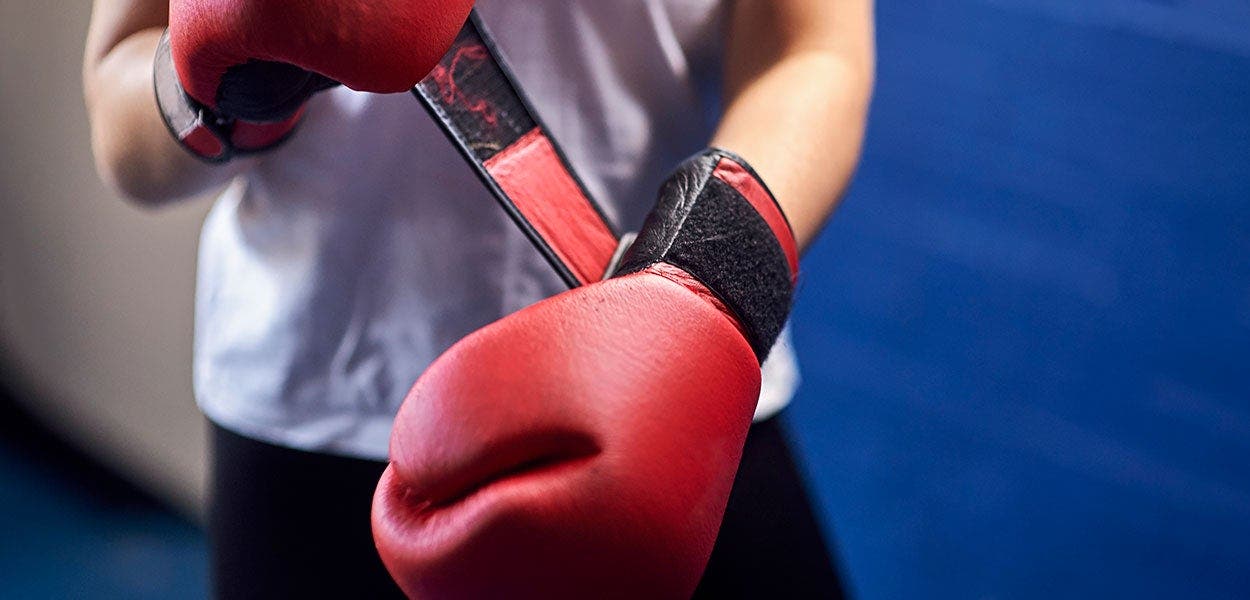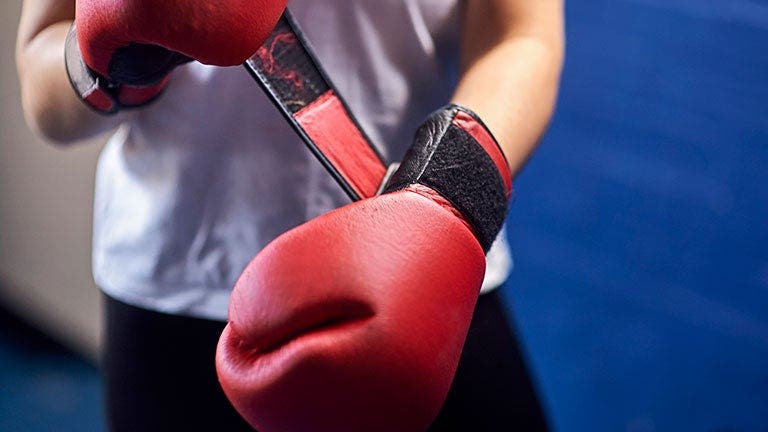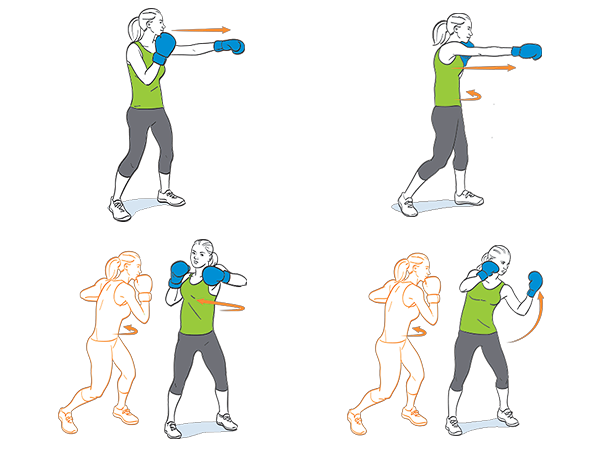What to Know Before Your First Cardio Boxing Class


Ready to learn how to pack a powerful punch and shed some pounds? Anyone can reap valuable fitness rewards from a fighting regimen. Follow these simple steps.
Step 1: Find a Class
From Power Boxing and Turbo Kick Boxing to Mixed Martial Arts (MMA), class names can be confusing at best and intimidating at worst. But actually, the difference between boxing and kickboxing is simple, says Jessica Penne, an LA Boxing trainer and top-ranked professional women’s MMA fighter. “In boxing, you only use your fists; in kickboxing, you use your feet, knees, elbows and punches,” says Penne. “While boxing uses a lot more upper body, kickboxing is a full-body workout.”
Whether you’re more interested in punching or kicking, Penne recommends taking different classes and even trying various gym locations and times, because class size and participants will differ.
“That’s why I love this workout,” she says. “There really is something for everyone — men and women, kids and adults." Plus, she notes, you can go at your own pace and make it as easy or challenging as you want it to be.
Step 2: Dress to Fight
Dress for boxing as you would for any vigorous exercise: in comfortable workout clothes that aren’t too restricting or too baggy. Footwear can include tennis, wrestling or boxing shoes. The flatter the shoes the better. Running shoes or anything with a platform lack the stability needed. Wrestling shoes are ideal; some kick boxers prefer to go barefoot.
When it comes to hand protection, however, quality is critical. The good news? You don’t need to invest in pricey equipment before you even know if you’ll like the sport. “Usually gyms will loan gloves and hand wraps, and instructors will show you how to wrap your hands properly,” Penne says.
If the class doesn’t provide these, make sure to buy wraps that are more than 108 feet (those are for kids’ hands). And don’t keep your gloves in a bag after using them. It’s important to air them out. Consider putting them on a windowsill and let them dry. If your gloves start to smell, sprinkle foot powder or stick a fabric softener sheet inside.
Whatever you do, don’t rely on cheap toy gloves as your form of protection. Do your research before you buy, and get properly fitted before plunking down any cash.
RELATED: Find workout clothes you feel good in
Step 3: Learn the Moves
If the first thing you think of when you hear the word boxing is full physical contact and brute force, have no fear. For the most part, the hardest thing you’ll hit is a punching bag.
“In a cardio boxing class, you’ll follow a format that will take you through a warm up, where you’ll do things like shadow boxing – not making contact with anything – jumping rope, and footwork drills like sidestepping, pivoting on the balls of your feet, and practicing ladder patterns on the ground,” Penne explains. “Then you’ll move on to punching combinations on the bag or hand mitts and end with a cool-down of ab exercises and pushups.”
If you are right-handed, you’re orthodox; and if you are left-handed, you’re southpaw. Your starting position always has your fists at your jawline, ready to protect. Your stance should be feet shoulder-width apart, your non-dominant hand and foot forward, and knees slightly. You should have your left leg forward if you’re orthodox, right if you’re southpaw.
Punching combinations include the four most basic punches:
- Jab: (See top left illustration below) Use your less dominant hand to punch forward. Orthodox uses the left hand; southpaw uses the right. This is your weakest punch.
- Cross: (See top right) This is your power punch. You use your dominant hand to punch forward.
- Hook: (See bottom left)The same hand use for your Jab crosses your body.
- Uppercut: (See bottom right) Your dominant hand punches up.
 “Think of your jab as your distance gage from your target and your cross as a straight punch from your power hand,” Penne says. Your hook is a semicircular horizontal punch with your elbow bent at a 90-degree angle, while your uppercut is a rising vertical punch. “You can hook or uppercut from both sides and they can be equally powerful.”
“Think of your jab as your distance gage from your target and your cross as a straight punch from your power hand,” Penne says. Your hook is a semicircular horizontal punch with your elbow bent at a 90-degree angle, while your uppercut is a rising vertical punch. “You can hook or uppercut from both sides and they can be equally powerful.”
Like any new sport, there’s a lot to learn, but Penne assures that a class environment is designed to make newcomers feel comfortable.
“Don’t worry about going into your first class not knowing anything,” Penne adds. “The instructor will take you through the technique, and you’re never going along all by yourself.”
Step 4: Enjoy the Benefits
As with any type of exercise, the rewards you reap are directly correlated to the investment you put in. Luckily, you truly have the power to impact your gain.
“It’s up to you to push yourself. If you’re just there padding lightly on the bag, you’re not going to see results,” Penne says. “But the bag is a great tool because it helps tone all of your muscles – when you make contact, your muscles contract. Plus, we add cardio and toning exercises with plyometrics, ab work, and pushups that burn fat and calories and tone your body. It’s a great overall workout that makes it possible to burn 1,000 calories per session.”
RELATED: Your go-to boxing workout
